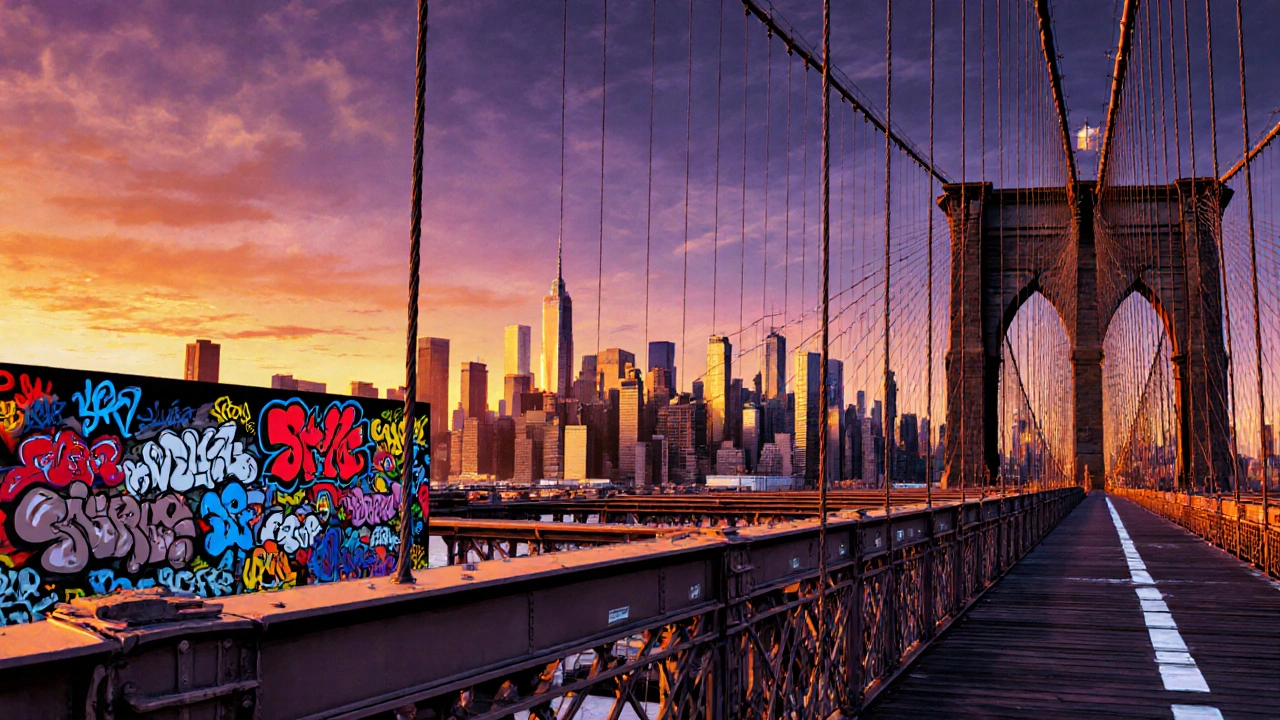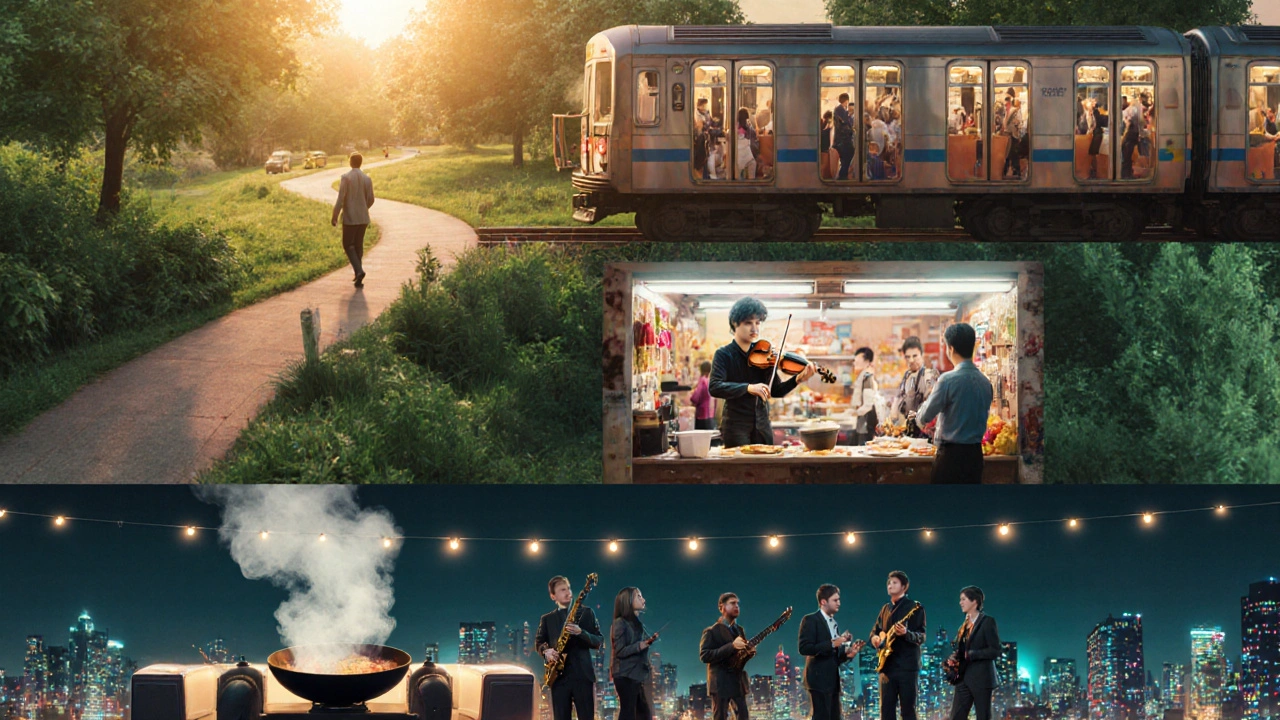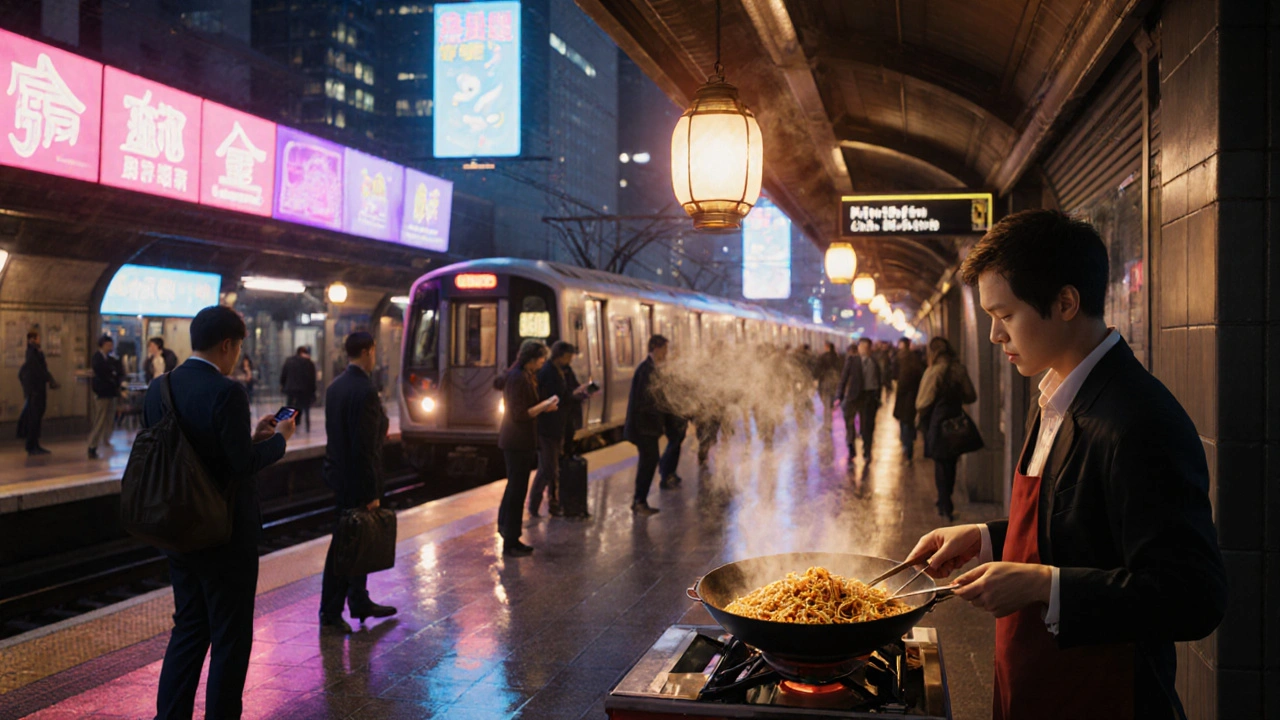City Experience Planner
Create Your Urban Symphony
Select elements from the article to craft a personalized city experience that reflects your interests.
Your Personalized Itinerary
Select your elements and click 'Generate Your City Symphony' to see your personalized itinerary.
When you hear the phrase big city life is the nonstop rhythm of a metropolis where noise, light, and culture blend into a daily performance, you probably imagine a crowded subway, neon billboards, and a street vendor serving a steaming bowl of noodles. In reality, the experience is far richer - it’s a symphony that changes with each neighborhood, each hour, each season. Below you’ll find the main movements of that symphony and a few practical tips for turning the city into your personal playground.
Key Takeaways
- Urban soundscapes shape mood and can be used intentionally for productivity.
- City skylines and street art tell a visual story of history and innovation.
- Public transportation is more than a commute; it’s a cultural lens.
- Street food markets offer a quick passport to a city’s culinary identity.
- Festivals and green spaces provide essential balance in the urban hustle.
The Soundtrack of the Streets
Urban soundscape is the layered audio environment created by traffic, conversations, music, and occasional birdsong. In New York, the distant wail of a siren mixes with the clatter of subway doors; in Tokyo, the rhythmic beeping of vending machines adds a futuristic beat. To make the most of this soundscape, try a few tricks: use noise‑cancelling earbuds for focus, but pop them out at a park bench to let the city’s pulse remind you you’re alive. Studies from the Acoustic Ecology Lab (2024) show that listening to ambient city sounds for ten minutes can boost alertness by 12%.
Visual Canvas: Skyline & Street Art
City skyline is the silhouette formed by towering buildings, bridges, and occasional historic towers. The view from Brooklyn Bridge at sunset paints a golden outline of Manhattan, while London’s Thames reflects the modern glass of the Shard alongside the timeless St. Paul’s dome. Street art adds another layer - think of the ever‑changing murals of Berlin’s East Side Gallery or the vibrant wheatpaste stickers of Los Angeles’ Arts District. When exploring, bring a notebook and sketch one visual that catches you; you’ll notice details you’d otherwise scroll past.

Getting Around: Public Transit as Experience
Public transportation is the network of buses, subways, trams, and ferries that moves millions daily. A morning ride on the New York City subway isn’t just a commute - it’s a moving gallery of performers, late‑night readers, and hurried baristas. In Seoul, the subway stations double as underground shopping malls, letting you grab a quick kimchi pancake before the next stop. Pro tip: grab a weekly pass and plan a “transit‑only day” where you let the route dictate your stops. You’ll discover hidden cafes, quirky bookstores, and neighborhoods you’d otherwise miss.
Taste of the City: Street Food & Markets
Street food is ready‑to‑eat dishes prepared by vendors on sidewalks, carts, or market stalls. From New York’s halal carts serving chicken over rice to Bangkok’s night markets offering mango sticky rice, each bite tells a story of migration and adaptation. Look for high‑traffic zones near office districts at lunchtime - the lines are a good indicator of quality. And don’t be shy about asking the vendor for the “secret sauce” - many city legends start with a splash of something unexpected.
Celebrations: Festivals and Nightlife
Cultural festivals are seasonal events that showcase music, dance, food, and traditions unique to a city. The New York Film Festival draws cinephiles from around the globe, while Rio’s Carnival turns every street into a parade. Nightlife isn’t limited to clubs; a rooftop jazz set in Chicago or a late‑night poetry slam in Melbourne can be equally immersive. To avoid the tourist trap, check community boards or local newsletters for pop‑up events that aren’t advertised on major tourism sites.

Balancing Green: Parks in the Urban Jungle
Urban green spaces are parks, gardens, and riverbanks that provide respite from concrete. Central Park’s 843 acres act as the city’s lungs, while Seoul’s Cheonggyecheon stream offers a linear park that replaced an elevated highway. When you need a mental reset, head to the nearest green spot and practice the “five‑minute walk” - simply stroll without your phone and let the natural sounds reset your stress level.
Putting It All Together: Craft Your Own City Symphony
Now that you’ve heard the main movements, try building a personal itinerary that blends them. Start with a morning walk through a green space, hop on a subway line you’ve never taken, pause at a street‑food stall for lunch, then spend the afternoon photographing skyline details. End the day with a local festival or a quiet rooftop concert. By treating the city as a composition rather than a backdrop, you’ll discover layers that most commuters overlook.
City Comparison Table
| City | Signature Sound | Iconic Sight | Must‑Try Food | Top Festival |
|---|---|---|---|---|
| New York | Subway screech + traffic hum | Manhattan skyline from Brooklyn Bridge | Halal chicken over rice | Tribeca Film Festival |
| Tokyo | Train announcement chimes | Shibuya crossing at night | Ramen from a side‑street stall | Cherry Blossom (Sakura) festivals |
| London | Double‑decker bus brakes | Thames view of the Tower Bridge | Fish & chips from a market stall | Notting Hill Carnival |
Frequently Asked Questions
How can I make city sounds work for me instead of being a distraction?
Identify the parts you enjoy - a distant train whistle, street musicians - and let those play at a low volume while you work. Use noise‑cancelling headphones to block the harsher elements, then switch to ambient city playlists when you need a break. Over time, your brain learns to treat the soundtrack as a background cue for focus.
What’s the best way to discover hidden street‑food gems?
Walk where locals walk. Office lunch corridors, university campuses, and commuter stations often host vendors with short lines. Ask residents for their favorite stall - word‑of‑mouth recommendations usually lead to the most authentic flavors.
Are there safety concerns when exploring a city at night?
Stick to well‑lit areas and keep an eye on your surroundings. Use public transit or ride‑share services for longer distances. Carry a small charger so your phone stays alive for navigation and emergency calls.
How do parks improve the quality of big city life?
Green spaces lower air pollution, provide shade, and offer a mental break from visual clutter. A 15‑minute walk in a park can reduce cortisol levels, making you more resilient to the city’s fast pace.
What inexpensive activities let me experience a city’s culture?
Visit free public museums on their designated days, attend open‑air concerts in parks, explore graffiti alleys, and join community meet‑ups posted on local social platforms. Many festivals offer free entry to street performances.

